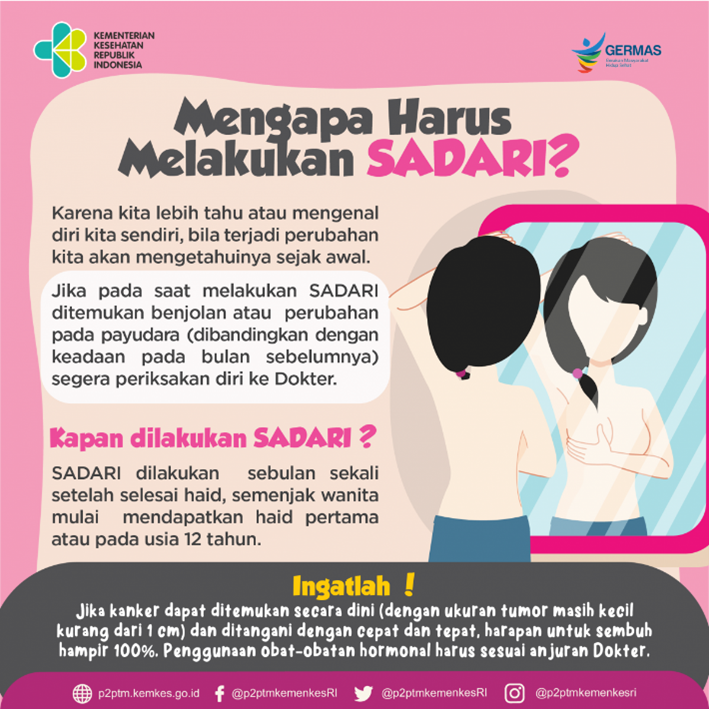Let's do SADARI (Self-breast examination)! To early detect Breast Cancer
According to the data from Globocan 2020, the new cases of breast cancer in Indonesia reached 68,858 cases (16.6%) out of a total of 396,914 new cancer cases. Meanwhile, the number of deaths from breast cancer has exceeded 22,000 cases.
Breast cancer is serious and dangerous disease that should be detected early to get the best outcomes. The prognosis of early breast cancer is quietly good. Stage 0 and stage I both have a 100% 5-year survival rate. The 5-year survival rate of stage II and stage III breast cancer is about 93% and 72%, respectively. When the disease spreads systemically, its prognosis worsens dramatically. Only 22% of stage IV breast cancer patients will survive their next 5 years. Early detection of breast cancer early detection can be found by regularly doing Self-breast examination (SADARI) or clinical breast examination (SADANIS). Unfortunately, the behavior in early detection of breast cancer in Indonesia is still low. Around 53.7% of the population has never performed SADARI and 95.6% of the population has never performed SADANIS.


The Indonesian Ministry of Health expected that SADARI and SADANIS performed regularly by every woman, to detect any lumps or any abnormalities in the breast as early as possible. SADARI and SADANIS can be performed every month on the seventh to tenth day from the first day of menstruation, or on the same date each month for menopause women. The sooner breast cancer is detected the sooner treatment can be given, and the better outcome can be reached.

The steps for SADARI, performing 7-10 days after menstruation:
- Stand in front of a mirror. Observe any changes in the shape and surface of the breast skin, swelling, and/or changes in the nipples.
- Place both palms firmly together to make the breast protrudes forward then observe again for lumps, wrinkled skin, or skin that looks like an orange peel, or a depression like a dimple, and nipples that are pulled inward.
- Squeeze and gently massage the area around the nipple to the nipple tip to see if any fluid comes out of the nipple (differentiate from breast milk).
- Lie down with a pillow behind your back, place your right hand behind your head and use your left hand to examine your right breast.
- Use the tip of your three middle fingers placed close together. Perform a circular motion with gentle but firm pressure, starting from the outer edge to the nipple, following a clockwise direction.
- Do the same as step 4 and 5, but with the left hand under the head and the right hand examining the left breast.
- Pay attention to the red-colored areas (indicated in the picture) because breast tumors are often found in those locations.



Sources : Kemenkes